Seasons – Summer 2019
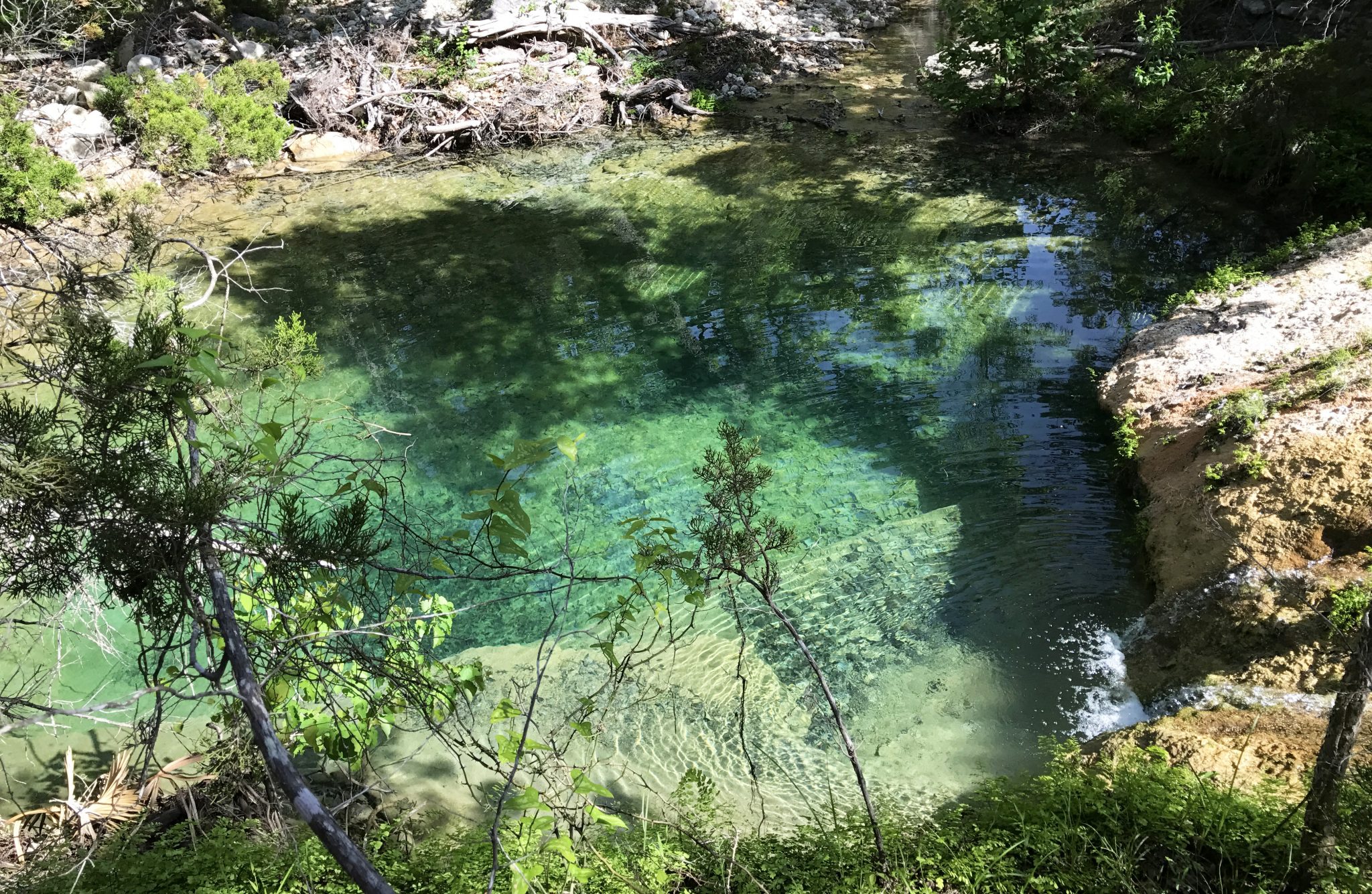
From the Plateau Land & Wildlife Management Team
The first half of the year seems to have flown by and another hot, Texas summer is upon us. Although this spring has been wetter than usual, we all know the dry season is right around the corner. The rain has been kind this spring, allowing the flora and fauna to thrive. As we prepare ourselves for the heat, we must also remember how summer can affect our land and the life on it.
As you relax and soak up this hot Texas sunshine, please enjoy this issue of Seasons. It’s full of great content provided by the Plateau team with articles ranging from the Gay Ruby Dahlstrom Nature Preserve grand opening, to summer wildlife management activity suggestions, to a piece motivated to getting you and your family outdoors this summer, and more! All of this is designed to help you stay on top of current events and news relevant to our landowners.
We hope you enjoy the read and everything this summer has to offer, and if there’s any way Plateau can help you protect, enhance or better enjoy your land during this special season, just give us a call. We’ll be here when you need us.
Until next season and Seasons,
The Plateau Team
Table of Contents
Gay Ruby Dahlstrom Nature Preserve Grand Opening
Summer Wildlife Management Activity Checklist
Mustang Grapes
Service Spotlight: Re-files & the annual report
Introducing New Plateau Employees
Capturing Wildlife on Remote Cameras
Upcoming Events
Flora & Fauna Friday – The best of spring 2019
#NoFilter Needed
Plateau Land Group Featured Listing
Gay Ruby Dahlstrom Nature Preserve Grand Opening
By Quincy Kennedy, Wildlife Services Technician
The Gay Ruby Dahlstrom Nature Preserve is open to the public! The 384-acre property is located entirely within the recharge zone of the Edwards Aquifer and features 3 miles of primitive hiking trails and a 0.75 mi. paved accessible trail. This preserve has particular value to the region because of its unusually dense concentration of karst features. Guided tours of the property will lead to a large karst feature that channels water all the way to Barton Springs, 14 miles away!
The Preserve is a first-of-its-kind public/private partnership in Texas. The Dahlstrom family retains private ownership of the land, while Hays County maintains the trail system and manages public access. The property is also protected in perpetuity by a conservation easement with Hays County, Hill Country Conservancy and the City of Austin.
The public entrance to the Preserve is located at 5131 FM 967 Buda, TX 78610, just west of Carpenter Hill Elementary. Hours of operation are currently 8:00 am – 4:00 pm, Thursday – Sunday. Because of the sensitivity of the karst landscape, the number of visitors allowed per day is limited. Visitors must reserve a day pass through the Hays County Parks website, found here. Requests for guided tours or other educational opportunities can be sent to the county’s education and outreach coordinator: [email protected].
Plateau Land & Wildlife has helped and studied the migrating songbirds passing through the Howe Pasture since 2016 by maintaining a quail station, nest boxes, and performing spring bird breeding surveys.
More information about the history of the project can be read in this article by Braun & Gresham.
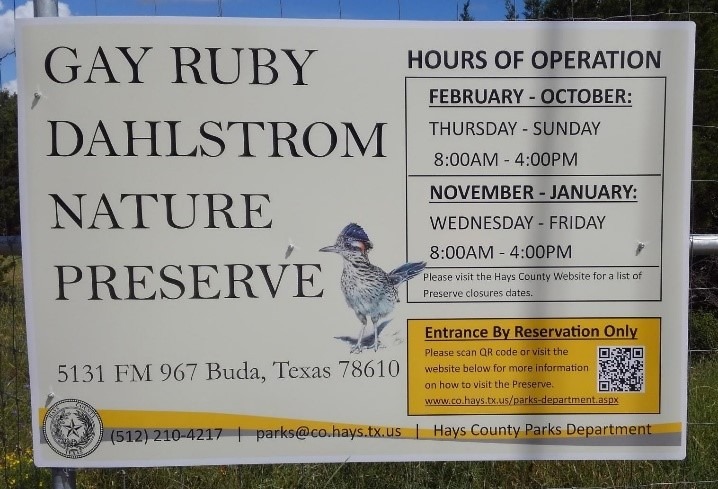
Summer Wildlife Management Activity Checklist
By Kameron Bain, Landowner Account Manager
Ella Fitzgerald sang that it’s “summertime and livin’ is easy” and it definitely seems that way sometimes. No school, long days, beach vacations – all of these things can make it difficult to focus on your wildlife management plan and activities. While you are having some fun in the sun, we encourage you to take advantage of those long summer days to meet one (or maybe even two) of your wildlife management activities. There are plenty of options to choose from this time of year, including:
- Chemical brush control
- Enroll in Managed Lands Deer Program (MLDP) harvest option: May 1 – September 1
- Protein feeding for deer
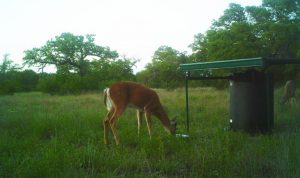 Deer surveys: Start in August
Deer surveys: Start in August- Feral pig control
- Pond construction or repair
- Imported red fire ant control
- Strip mowing: Late July and August
- Half-cutting mesquite
- Supplemental water maintenance
- Camera surveys at water sources
Mustang Grapes
By Lanette Patterson, Ecological Services Administrative Assistant
For weeks now I have stalked the Mustang grape vines that grow wild throughout the trails in my central Texas neighborhood. I inspect all the usual spots to see how well the vines are faring. “Checking the harvest,” my husband teases – he knows I will soon be putting him to work. In the coming weeks, we will outfit ourselves with buckets, a ladder, and a wagon, and set out to bring in the grapes.
Most of my favorite batches are thriving, their clusters of green grapes growing reliably larger by the week, while others, perhaps having reached a bit too eagerly into the hike and bike trail earlier in the season, fell victim to decisive brush management efforts on the part of the landscape crew. Fortunately, for every fallen vine, a new one always seems to appear a little further up the trail.
The Mustang grape (Vitis mustangensis) is one of several wild grape species that grows throughout Texas. It is sometimes confused with the Muscadine grape (Vitis rotundifolia). I have been guilty of using the names Mustang and Muscadine interchangeably, but they are, in fact, different species.
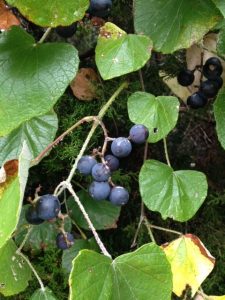 For those of us living in central Texas, most of the vines we see cruising along fence lines and overtaking juniper are Mustang vines. Their leaves are broad and spade-shaped (although they can also be lobed) with gently serrated edges and soft, white, velvety undersides. Mustang grapes will ripen July through August.
For those of us living in central Texas, most of the vines we see cruising along fence lines and overtaking juniper are Mustang vines. Their leaves are broad and spade-shaped (although they can also be lobed) with gently serrated edges and soft, white, velvety undersides. Mustang grapes will ripen July through August.
Muscadines are more commonly seen in eastern Texas counties. Muscadine leaves are similarly shaped to Mustang leaves, but with more sharply serrated edges, and are green and glossy both above and beneath. Muscadine grapes will ripen late August through September. Foraging for wild Mustang grapes is hot and itchy work. Each summer I cultivate a renewed appreciation for the term “low hanging fruit.”
The acidic grapes irritate skin, which makes long sleeves and gloves essential. I also wear boots and like to carry a “snake stick” to poke around through dense brush and convince myself the coast is clear of anything that slithers on its belly or crawls on eight legs before I extend my hand to reach in for fruit.
While I do admit that it makes me a little crazy to see clusters of ripe grapes dangling and tantalizing out of reach, we always leave plenty behind for the wildlife, such as fruit-eating birds and bugs. Despite the fact that grape leaves and fruit are good deer food, the deer in my neighborhood don’t seem to care for the grapes. We then haul ourselves and our grapes home and promptly put them away.
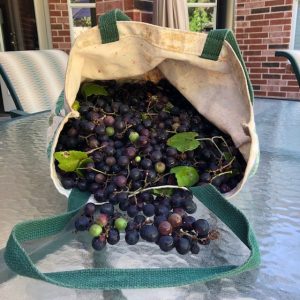
Mustang grapes are too tart and acidic to eat as table grapes, but they make great jam. We bottled homemade Mustang grape wine for the first time this past year, but it will be another year or two before I can report on results (I’m not terribly optimistic).
Mustang grape jam has personality. It is tangy and sweet, with a seductive deep-red color. Making the jam is a whole lotta work. The grapes must be stemmed, cleaned, cooked, and mashed, then passed through a food mill to separate the pulp from skins and seeds. The jars are washed and sterilized, individually filled and closed, and simmered in a big enamel pot. I love listening for the satisfying “POP!” of each jar as they cool and seal.
Within a few weeks, the pantry will be restocked and my family will enjoy the fruit of our labor for another year. Special friends readily receive gifted jars each summer. If I happen to have the opportunity to deliver a meal to a new parent or an ailing friend, they are assured of receiving a jar of jam, as well.
It gives me great joy to forage for Mustang grapes each summer. I greet the task with astonished gratitude. The harvest, a gift—a provision unworked for and undeserved. Something a lot like grace. A reminder to be grateful for both what has been and what is to come.
Back to TopBack to Top
Service Spotlight: Re-files & the annual report
This past filing season the Plateau team saw an increase of Central Appraisal Districts (CADs) requesting an annual report and/or an updated five-year wildlife management plan. Plateau works in roughly 70 counties each year and this increase in requests has left many landowners confused about the difference between the annual report and updated / re-filed plan. This post should provide some clarity.
The Wildlife Management Plan includes detailed information about your property and your plans for future wildlife management activities over the next 5 years. It is a great guide & tool for you to follow year after year. Your plan also informs the CAD of what you will be doing to comply with wildlife management requirements.
Most CADs request that you update your wildlife management plan every five years. If either of the following occur during the calendar year then state law requires you to update and re-file your plan:
- Change in legal ownership name
- Change in acreage size
If either of these changes occurs this year, you will need to re-file your wildlife management plan with your CAD by April 30, 2020.
The Annual Report is proof for the CAD to see that you have completed the activities in your wildlife management plan in the prior year. It should include documentation of your activities such as photos, receipts, log sheets, etc.
Appraisal districts will send out requests as early as September with most reports due between January and April 30.
Back to TopBack to Top
Introducing New Plateau Employees
Sue Carrara, Human Resources Manager
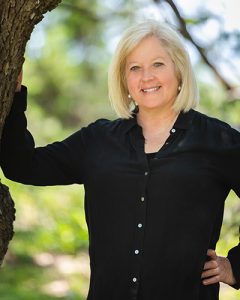 Sue grew up in the suburbs of Cleveland, Ohio and moved to California with her husband where they lived in the Santa Cruz Mountains and the foothills of Yosemite. Sue eventually moved to Portland, Oregon where she worked, raised four kids and, in her spare time, had a hobby farm of 30 llamas on the Tualatin River. She eventually moved back to Ohio and then on to central Texas to be closer to her family.
Sue grew up in the suburbs of Cleveland, Ohio and moved to California with her husband where they lived in the Santa Cruz Mountains and the foothills of Yosemite. Sue eventually moved to Portland, Oregon where she worked, raised four kids and, in her spare time, had a hobby farm of 30 llamas on the Tualatin River. She eventually moved back to Ohio and then on to central Texas to be closer to her family.
Over the years, experience has taught Sue that honesty and discretion are the key components to a strong HR department, but equally important are effective communication and a calming demeanor which help with conflict resolution. She brings that experience to the Family of Companies. Sue now lives in Wimberley with her husband and appreciates how genuinely kind the people are in central Texas. She loves to garden, cook and is an avid supporter of locally grown seasonal foods.
Maria Howerton, Sales Assistant
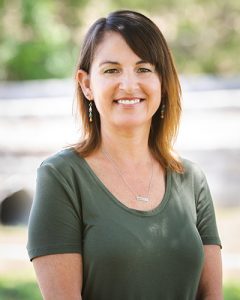 Maria grew up enjoying the beautiful beaches on the east coast of Florida. For the last nineteen years, she worked for the Brevard County Property Appraiser before making her move to Texas in October of 2018. She’s always had a special fondness for Texas, so luckily when her husband, a native Texan, proposed last year she said yes (mostly to move to Texas, he jokes). They live on a few acres in Dripping Springs and are loving the country life.
Maria grew up enjoying the beautiful beaches on the east coast of Florida. For the last nineteen years, she worked for the Brevard County Property Appraiser before making her move to Texas in October of 2018. She’s always had a special fondness for Texas, so luckily when her husband, a native Texan, proposed last year she said yes (mostly to move to Texas, he jokes). They live on a few acres in Dripping Springs and are loving the country life.
When they married this past April, Maria became the mother of six dogs, numerous cats, and two human pets. She has a strong passion for all animals (especially dogs) and still gets silly excited seeing all the deer, roadrunners and cows. She even makes her husband pull over so she can take photos of the Longhorns!
Maria is very excited to join Plateau Land & Wildlife and see where this next journey of life takes her. She looks forward to helping landowners and learning more about the native wildlife of Texas.
Quincy Kennedy, Wildlife Services Technician – Dripping Springs Region
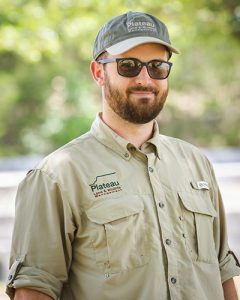 Quincy grew up in the village of Joshua Tree, CA. After graduating from the University of Redlands with a double major in Psychology and German, he moved to Tucson, AZ to train in field archaeology at Pima Community College. He used that training to work as a contract archaeologist throughout the American southwest for two years before moving to Driftwood, TX.
Quincy grew up in the village of Joshua Tree, CA. After graduating from the University of Redlands with a double major in Psychology and German, he moved to Tucson, AZ to train in field archaeology at Pima Community College. He used that training to work as a contract archaeologist throughout the American southwest for two years before moving to Driftwood, TX.
Quincy was able to land an incredible position coordinating education and outreach programs for Hays County Parks at Jacob’s Well Natural Area. It was the ultimate crash course in central Texas wildlife and hydrogeology. And now at Plateau, he is able to continue learning and exploring.
Corey Myrick, Wildlife Services Technician – Hill Country South Region
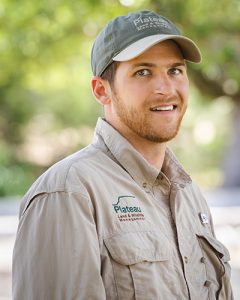 Corey was born and raised in New Braunfels, Texas where he developed a love for the natural world while hunting for critters as a young boy and hiking on new adventures in Boy Scouts.
Corey was born and raised in New Braunfels, Texas where he developed a love for the natural world while hunting for critters as a young boy and hiking on new adventures in Boy Scouts.
Corey graduated from San Antonio College with an A.S. in Environmental Science and then went on to West Texas A&M University and received his B.S. in Wildlife Biology in 2017. From there he began Graduate School studying Environmental Science but instead decided to pursue a career in and with wildlife. Corey’s volunteer work on research projects has given him vital experience with a wide variety of wildlife practices.
Corey is excited to be part of a group that works with private landowners to improve habitat and promote conservation.
Shane Davis, Wildlife Services Technician – Pines & Prairies Region
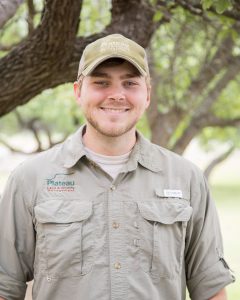 Shane was born and raised in east Louisiana along the Mississippi River. He grew up hiking the woods of Louisiana and Mississippi where he first developed his love for wildlife and the outdoors.
Shane was born and raised in east Louisiana along the Mississippi River. He grew up hiking the woods of Louisiana and Mississippi where he first developed his love for wildlife and the outdoors.
In 2014, Shane graduated from LSU at Alexandria with a B.S. in Biology with a wildlife emphasis. He then moved to Austin while his wife attended Physical Therapy school. Shane soon started working for Plateau in early 2015 and enjoyed all that the job had to offer. In late 2017 Shane and his wife decided to see what else the world had to offer and moved out to the Pacific Northwest. While there, Shane worked with the U.S. Forest Service, studying the breeding habits of White-headed Woodpeckers. While they enjoyed their time there, they never found a place that felt like home and ultimately decided to move back to Texas.
Shane was overjoyed to find out that Plateau needed a technician in their Pines and Prairies (East TX) Region and is happy to be back working for a company that truly cares about both the land and the landowners they serve. Shane is excited to help grow and learn more in this region.
Back to TopBack to Top
Capturing Wildlife on Remote Cameras
By Corey Myrick, Wildlife Services Technician
Remote cameras, commonly referred to as game or trail cameras, have been used in various ecological research for more than 50 years. These cameras, when set in a targeted area, are well-equipped for a variety of field applications. These include identifying nest predators, documenting animal activity and behavior, estimating animal abundance, monitoring species occurrence (including rare or endangered species) and more!
Remote cameras allow landowners to get a remote view of what is happening when the environment is undisturbed. If human presence is detected, results may be biased because animals typically avoid such detection.
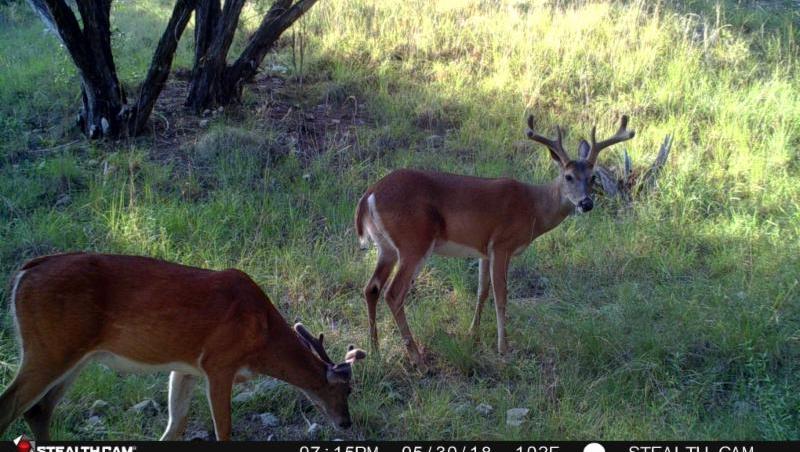
Today’s cameras are much different from years ago. They now come with numerous options – burst picture, thermometer/thermal imagery, LED lights, white lights, and the list continues. With so many options available it’s easy to lose track of what you actually want to study.
It is crucial to purchase a camera suited to your study – a study on nocturnal species should have a camera that can capture a good picture in low light condition. It would be seemingly useless to have a bunch of blurry photos where you can’t identify what is being captured in the frame, right?
Remote cameras can be a useful tool in wildlife ecology, but their usefulness depends on the quality of the study design, equipment used and capabilities of the operator.
Back to TopBack to TopUpcoming Events
Plateau Summer Webinars
Each summer Plateau offers and presents free webinars for anyone with an interest in Texas land & stewardship. Register for your favorites today! Space is limited and filling up fast.
- June 26 at noon: Eminent Domain – Your rights as a landowner
- July 17 at noon: Know Your Plants: Native plant identification for common grasses, forbs and wildflowers
- July 24 at noon: Wildlife Management Valuation Midyear Check In
- August 7 at noon: Butterflies, Wasps & Bees, Oh My! How to manage for native pollinators on your property
- August 28 at noon: Five Tools of Wildlife Management: The basic tools necessary for successful wildlife management
Landowner Incentive Programs – FREE seminar!
An overview of programs, how to find them and the application process
CALLING ALL LANDOWNERS! Join Plateau & Hill Country Alliance on July 25 in Junction, TX for an overview of programs that provide funding or assistance for conservation and habitat management projects on your land, with a focus on the Landowner Incentive Program (LIP) and Pastures for Upland Birds (PUB). This is a comprehensive look at incentive programs available, who they are for, what to know about them and how to apply!
Hear from special guest and sponsor Hill Country Alliance about additional educational and financial resources to support your land stewardship efforts. Family, friends, and neighbors welcome! Enjoy snacks and beverages while learning how to protect your land’s natural resources.
RSVP here
Kimble County Library
208 N 10th St
Junction, TX 76849
TWA Convention
Catch Plateau at the Texas Wildlife Associations 2019 WildLife Convention! The event runs all day July 12 – July 13 at the JW Marriott San Antonio Hill Country Resort (Grand Oaks Ballroom, Level 2, 23808 Resort Pkwy, San Antonio, TX 78261) with numerous vendors, exhibits, summits, auctions, presentations and more!
Plateau Booth #620: Find Plateau team members, information and merch!
Silent Auction Donations: Bid on one of three Plateau bundled packages including, but not limited to nest boxes, no trespassing signs, rain gauges, tumblers and more!
Plateau presentation: Hang with Plateau wildlife biologist David Riley on Saturday, July 13, 11:00-11:45 for his presentation on Feral Hog Management Technologies: The Old and the New.
Find full schedule of events here.
Back to TopBack to TopFlora & Fauna Friday – The best of spring 2019
Every Friday on the Plateau Facebook page, one of our team members posts a fresh mini-article about a unique and fascinating critter or plant that is found in Texas. Today we’re featuring a few of our spring favorites – like us on Facebook to see these posts on your newsfeed every Friday!
-
- The Lace (or Hedgehog) Cactus (Echinocereus reichenbachii) is a small spherical cactus occupying the western 2/3s of Texas, establishing in well-drained caliche, sand or limestone soils. This includes the entirety of the Chihuahuan Desert as well as the Edwards Plateau upland savannahs and juniper-oak woodlands. As a result of their widespread distribution, there are numerous variations and subspecies, one of which is the Black Lace Cactus, which is endemic to Texas and currently an endangered species. The scientific name is derived from the Greek “ekinos” for hedgehog, where it gets one of its common names. While relatively non-descript and often overlooked due to their small size, between April and June they display a bright and beautiful purplish-pink flower that cannot be ignored.
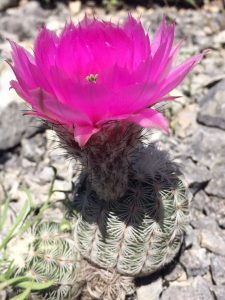
- Spring is underway in Texas, heralded by warmer temperatures, birdsong, and blooming plant life. For White-tailed Deer (Odocoileus virginianus), this is the beginning of the fawning season. It is common to find a fawn bedded in tall vegetation, lying still, and seemingly abandoned with mother doe nowhere in sight. While the young animal appears to be alone and requiring our assistance, our intervention can actually become detrimental to its survival. Periods of motionless isolation is a perfectly natural form of avoiding detection from predators, while the doe forages or rests elsewhere. More than likely, as we attempt to care for the “orphaned” fawn, the doe is nearby and attentive to its offspring. Therefore, handling a bedded fawn is often unnecessary, and will cause undue stress to the animal. If the fawn appears emaciated or injured, then it is acceptable to provide aid by contacting a wildlife rehabilitator. Otherwise, do not handle or disturb the animal, other than snapping a picture and taking a brief moment to admire nature at its work.
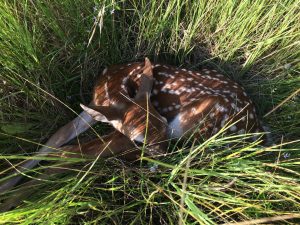
- Nothing says Texas more than bluebonnets during springtime and there is no bluebonnet quite like Lupinus harvardii, more commonly known as the Big Bend Bluebonnet. As the name suggests, this species is linked to Big Bend National Park in west Texas and has a very small range, barely extending past the park boundaries.This wildflower prefers gravelly, fine soils commonly found in the valleys, hills, and mountain slopes of the desert. Like the Texas Bluebonnet most of us are familiar with, this species is an erect, annual lupine with a long, slender stem and unique blue inflorescence. Blooming between January and June, the Big Bend Bluebonnet is the tallest of all lupine species found in Texas, reaching up to 4 feet in height. These striking wildflowers are an annual attraction for Big Bend National Park, bringing in visitors from all over. If you have planned a trip to the area in the coming months, you’ll find roadsides throughout the park lined with these beauties, though the drive to Castolon offers a particularly special viewing opportunity, in my opinion.
- The Lace (or Hedgehog) Cactus (Echinocereus reichenbachii) is a small spherical cactus occupying the western 2/3s of Texas, establishing in well-drained caliche, sand or limestone soils. This includes the entirety of the Chihuahuan Desert as well as the Edwards Plateau upland savannahs and juniper-oak woodlands. As a result of their widespread distribution, there are numerous variations and subspecies, one of which is the Black Lace Cactus, which is endemic to Texas and currently an endangered species. The scientific name is derived from the Greek “ekinos” for hedgehog, where it gets one of its common names. While relatively non-descript and often overlooked due to their small size, between April and June they display a bright and beautiful purplish-pink flower that cannot be ignored.
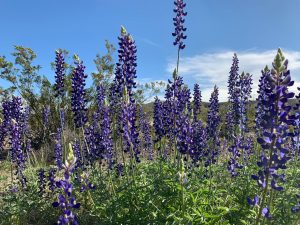
#NoFilter Needed
By Nick Fisher, AWB, Wildlife Services Technician
Summer is here and destinations with water features are filling up. Unfortunately, when not in a body of water, inside screen time is trending as the next best option. New phones, new shows, and seemingly unfulfillable quest for social interactions are driving people of all ages indoors, disconnecting with the natural world.
Along with childhood obesity and poor mental health, the next generation will not understand the importance of preserving and protecting our natural resources without positive outdoor experiences now. In a world focused on increasing technology, there is reason to stay educated with technological advances, but like all good things, there needs to be balance. According to the National Recreation and Park Association, today’s generations of children spend less time outside than any other generation. With so many options as far as gaming, tablets, and smartphones, the ease of screen time worsens the disconnect to nature. Not only is the future of conservation a worry, but the health of our children and even our economy is at risk.
This article is not an attempt to reestablish the picturesque camping family that goes fly-fishing for trout and prepares it on an open flame deep in the woods during a weeklong family vacation. Instead, I encourage you and your family and friends to take in the natural world as it is whenever you can. Aim for one hour a day. The list of outdoor activities is infinitely long and equally diverse. Backpacking through the canyons of Guadalupe Mountains National Park searching for elk is not for everyone but a hike through the city park could still yield a whitetail deer with a fawn this time of year. Bowfishing for trophy alligator gar in East Texas is not for the faint of heart, but state parks allow for dropping in a line without a fishing license and even offer free events that teach fishing basics for families to attend.
A Harvard study showed that getting a notification via social media or text message released the same dopamine chemical that is released when we eat good food, after exercise, or have successful social interactions (reward for beneficial behaviors motivating us to repeat them). This is why we are so attached to our devices. If we are going to carry these computers with infinite knowledge around in our pockets, why not use them to benefit the world by learning more about it. If you or your child can’t seem to put down your iPhone X with its 12-megapixel camera, even outdoors, I encourage you and your family to download the iNaturalist app and participate in citizen science wherever you go. It’s as simple as photographing flora and fauna and instantly you learn more about the natural world.
If you or your kids are more into the music scene than the photos, I challenge you to get iBird Pro and eBird apps (link to article) to learn and match the beautiful songs and calls of the birds that call your territory home.
At the rate we are reducing our natural areas and developing land, the list of declining species is only growing and it is difficult to influence someone to protect and conserve the land when they do not see what it actually provides for. These diverse experiences will still allow for the technology available to be utilized while increasing their attention span as they focus on a sound, pattern, or color of species they do not yet recognize.
I have two young children of my own and work two jobs to support my family. Nothing sounds as relaxing as flipping on a sports game and sitting on the couch when I get home from work, yet long before I even think about grabbing the remote, I think about my children’s well-being and how my actions towards them now could have an impact on the future of our planet. Some may say my children will easily grow up enjoying the outdoors as they have a trained wildlife biologist as a dad, but my parents were a machinist for surgical parts and a social worker when I was growing up, yet I strain to think of a significant memory from my childhood that did not involve the outdoors. It does not take a guided hike from a trained wildlife biologist to enjoy and reap the benefits of nature.
I realize that my passion for wildlife and the natural world derives from the countless hours I spent flipping rocks and logs looking for reptiles and amphibians. I think back to the warm summer evenings sitting outside with my dad listening to the frog and toad calls echoing from the ephemeral stream behind our house and investigating with headlamps. I remember pulling over on the side of a back road with my grandma as we approached a feeding flock of migrant birds in the woods and using her binoculars to try to identify the quick little flashes of feathers in the trees. I recall the young cottontail rabbit my mom rescued from the dog and nurtured back to good health. To the others involved, they may have forgotten about those events as they did not deem significant life experiences. Little did they know they would affect and influence the rest of my life and now my own family.
“In every walk with nature one receives far more than he seeks.” – John Muir, 1838-1914
Back to TopBack to TopPlateau Land Group Featured Listing
Sprawling Residential Oasis
Paige, Bastrop County, TX
33.52 Acres, $899,995
A residential oasis nestled in the quiet countryside complete with a spacious main home, guest house, cabin, recording studio, rose garden, and a picturesque 1-acre pond all surrounded by 33 gorgeous acres. Located less than an hour to Austin and under 2 hours to Houston, this property could serve as a homestead, bed & breakfast, corporate retreat, or musician studio.
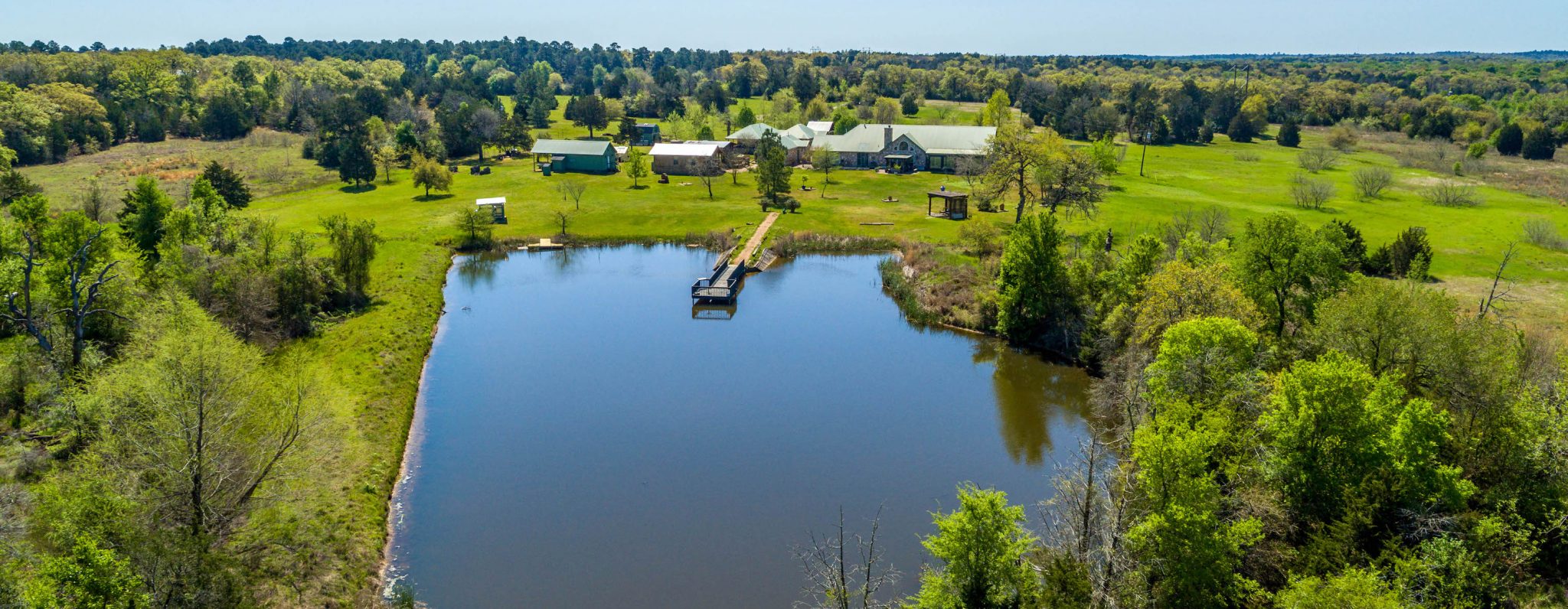
View all of Plateau Land Group’s listings.
Click here to receive PLG’s newest listings by email.
Back to TopBack to Top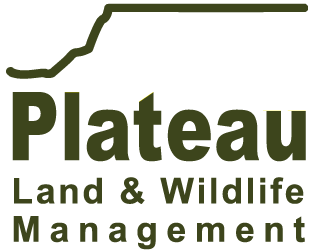

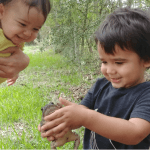
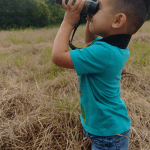
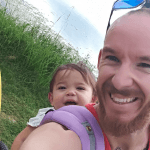
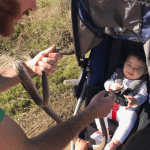

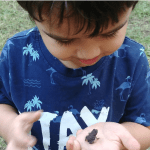
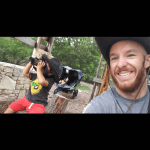
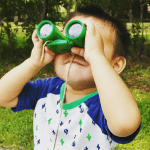

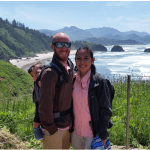
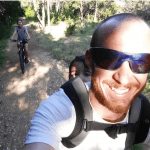
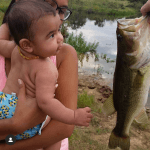




Sorry, the comment form is closed at this time.